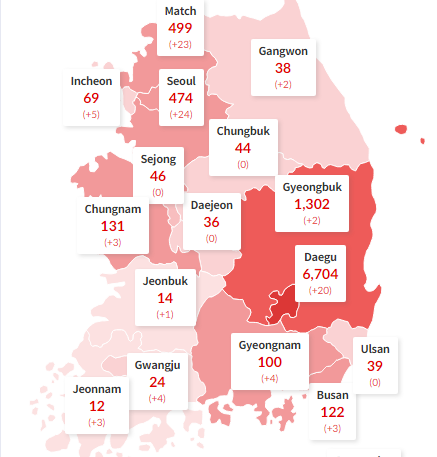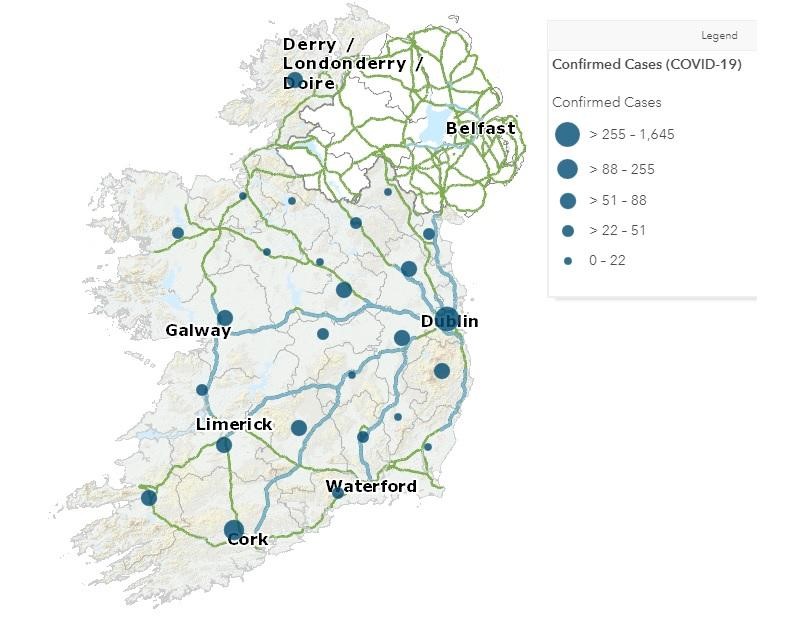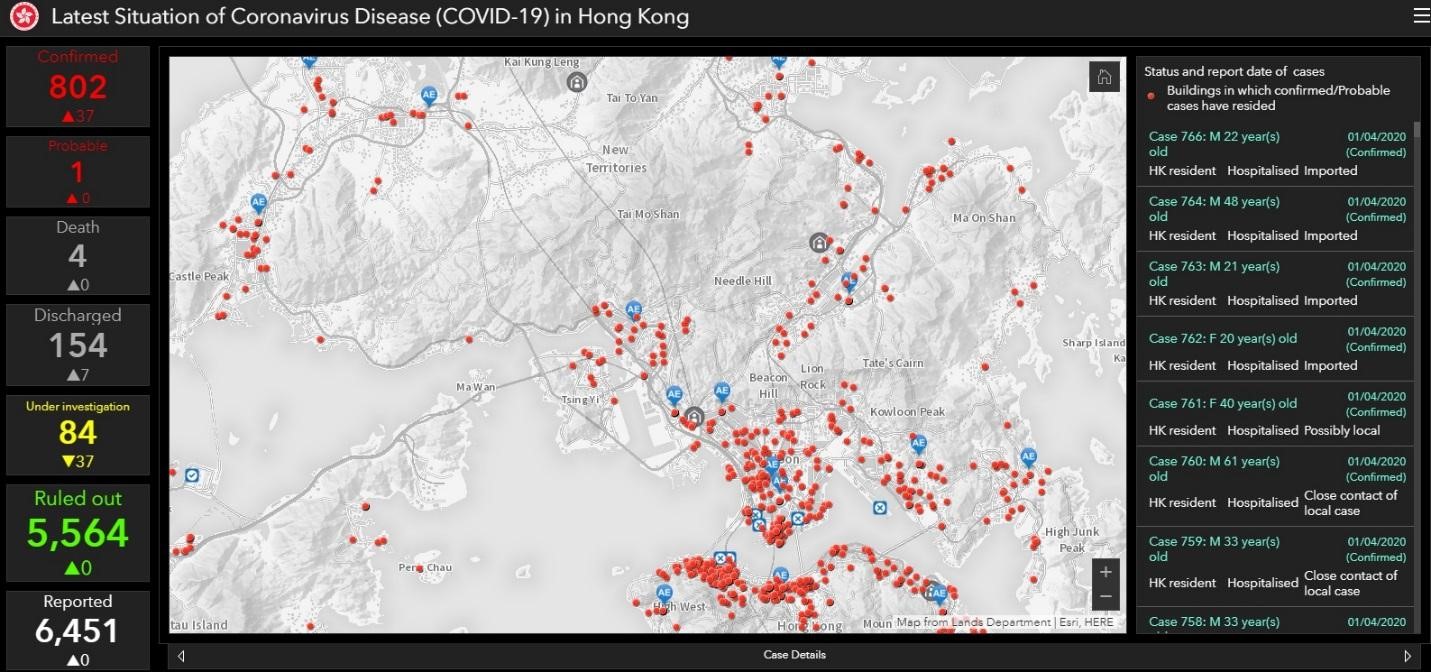


 The virus, known worldwide as COVID-19 originated in the city of Wuhan, China, and quickly spread all over Asia, Europe, and North America. As of today, over 1 million cases have confirmed, and this number continues to rise. Although the rate of contagion varies country by country, depending on their approaches to this emergency and other general factors. For examples, the first reaction in western countries was quite mild and mainly consisted of attempts to raise public awareness, since at the time the virus was assumed to be characterized by mild symptoms, only dangerous for specific risk groups (the elderly, those with immunodeficiency, and other chronic diseases). However, the flaws of this approach became evident, after seeing the collapse of Italy’s healthcare system under the pressure of an overwhelming number of COVID-19 patients suffering from severe symptoms.
The virus, known worldwide as COVID-19 originated in the city of Wuhan, China, and quickly spread all over Asia, Europe, and North America. As of today, over 1 million cases have confirmed, and this number continues to rise. Although the rate of contagion varies country by country, depending on their approaches to this emergency and other general factors. For examples, the first reaction in western countries was quite mild and mainly consisted of attempts to raise public awareness, since at the time the virus was assumed to be characterized by mild symptoms, only dangerous for specific risk groups (the elderly, those with immunodeficiency, and other chronic diseases). However, the flaws of this approach became evident, after seeing the collapse of Italy’s healthcare system under the pressure of an overwhelming number of COVID-19 patients suffering from severe symptoms.
As the World Health Organization declared the COVID-19 outbreak a pandemic, many countries had to switch to crisis management mode and start prioritizing between important social principles, such as healthcare, freedom of movement, privacy and, economic welfare. At this stage, the gravity of the situation has mostly been acknowledged globally. Unfortunately, many countries have considerably delayed implementing preventative measures. In Spain, for example, when the number of infected people was already in the hundreds, sports events, crowded gatherings, and demonstrations were still being held unobstructed. In contrast, the Chinese Government did not hesitate to take radical measures and quarantined the entire region of Hubei (where the original outbreak occurred). From the present perspective, their approach seems to have halted the spread as of today, the number of new infection cases reported by China is almost negligible. Yes, the People’s Republic of China seems to have tamed the outbreak, but the question is, at what cost? The Government confined 60 million citizens in their homes under threats of heavy fines. In addition, economic activity throughout the country was significantly hampered, factories, production plants, shops, banks, and many other facilities were shut down. According to the current data, China’s productivity has dropped below the threshold recorded during the 2008 global economic crisis. Furthermore, there are widespread beliefs and suspicions that the Chinese government has been falsifying their statistics from the beginning, in an attempt to hide the severity of the situation and project stability.
Fortunately, the Chinese method is not the only example of success. The current situation indicates that prevention is the most optimal strategy to fight the virus, this involves raising public awareness, increasing data accessibility, introducing new technologies, and the cooperation between the government and other stakeholders in relevant areas. In this article, we discuss the best international practices in the fight against pandemics and successful initiatives or applications in individual countries.
Informative Platforms
Similarly to Georgia, almost every county has established an information portal, which incorporates data about the virus, official recommendations, description of the symptoms, an overview of related government responses and statistics (number of infected, deceased, recovered, tested, hospitalized, etc.). For example Canada, South Africa, South Korea, Iceland, and Ukraine.
The Government of Singapore published infection statistics in more detail. General Statistics, as well as data for individual infections, including sex, age, nationality, status (In hospital/Recovered), source of infection, date of discovery, and country of origin, is available in machine-readable format on this civil society platform.

More sophisticated versions of the portal also feature regularly updated local maps, where cases of infection are reflected by regions, allowing residents to make more informed decisions regarding their travels and movements.


The picture on the left shows the South Korean example, and on the right, there is an example from the Republic of Ireland.
The Hong Kong Administrative Region further specified the location of the outbreak and displayed the exact addresses of the infection discovery points on the map.

Ecuador has dedicated a section on its information platform to exposing false information. This page contains fake news articles and false claims issued by official broadcasters and publishers, as well as false information spread through social media by popular individuals and influencers.
Initiatives for Monitoring Infection Symptoms
A remote monitoring platform is currently being usedin France, Lifen, an open-source application that allows for safe interaction and exchange of medical documents between doctors and patients. A similar system also functions in Italy. The users fill out a simple form, which is then uploaded to the server and made accessible to healthcare workers. In cases where potential virus-related symptoms are detected, the patient is contacted for further examination. The application supports text, voice, and video communication. Similar initiatives have the potential of alleviating pressure from hospitals, reducing the need to visit medical facilities, and preserving hospital beds for critical patients.
Facilitating Social and Economic Assistance
The ongoing pandemic is severely affecting the global economy, especially the tourism sector, aviation, and service industry. With fewer jobs and a large portion of the population left without income, many countries have already started implementing social assistance programs for the most vulnerable citizens. Experts forecast the economic recession will keep getting worse, as the pandemic progresses. Therefore, government aid will become more and more necessary and relevant, along with optimal systems to allocate it. Ireland has already taken steps in this direction. They have created a portal that allows citizens, that have lost their income due to the pandemic, to register and claim unemployment payment (350 EUR per week). A similar platform is also available in Peru. The website contains a request form for one-time cash assistance (equivalent to 108 USD).
The Ministry of Economy of Lithuania has created a consulting page for small and medium-sized businesses, where various experts regularly engage with audiences. They help entrepreneurs with advice on a variety of relevant issues, such as online sales, developing a system for remote working, adapting with emergency regulations, etc.
Initiatives related to Traveling Permits
In Italy and Germany, where citizens in certain areas are restricted from traveling freely, a website has been introduced, where it is possible to fill out an application online as needed and obtain a permit to travel internally. This system is important to alleviate mobility problems for citizens during the state of emergency. Such services may be needed in Georgia if self-isolation restrictions are tightened.
Virus tracking Mobile Applications
Mobile applications that allow users to track the spread of the virus are rapidly gaining popularity in many countries. According to the Deputy Health Minister Tamar Gabunia, the Georgian government is collaborating with the Austrian Government to introduce a similar application in Georgia. In most likelihood, this is referring to the STOPP CORONA app, created by the Austrian Red Cross, it already has over 130,000 downloads.The application uses an anonymous contact diary that logs personal encounters using a "digital handshake", and allows users to track who they have been in contact with. If one user shows symptoms of the corona infection, they have the option to warn the app and send a notification to all those who "digitally shook hands" with them. The notification does not include any private information about the infected individual’s identity or location, only the time of contact. However, the application does not function automatically, the users have to manually pair their phone with every encounter (who also need to have the app installed on their phones), and the notification function, in case of confirmed infections, is completely voluntary. Therefore, the application’s effectiveness is directly proportional to the number of its users and their willingness to follow its instructions.
This type of application was also implemented by the Government of Singapore. Trace Together uses Bluetooth Relative Signal Strength Indicator (RSSI) readings between devices across time to approximate the proximity and duration of an encounter between two users and saves anonymized ID codes, through which the Ministry of Health can use to contact people who had close encounters with the infected individual, to provide timely guidance and care. GPS location and private data are not used and all data is stored locally on each user’s mobile phone. Unlike the Austrian version, contact tracing is done automatically. However, this application’s effectiveness is also determined by its popularity among citizens of a certain area. At this stage, the application has over 1 million downloads, meanwhile, the population of Singapore is about 6 million.
An application called Rakning C-19 is already in effect in Iceland, and the Norwegian government also plans to introduce an identical one. The app collects user GPS data stored in encrypted form on a protected server. If a user is diagnosed with the virus, all other users that have been in contact in the past 14 days get sent a short warning text by health authorities, so they can take the necessary measures.
Out of the tracking apps, the South Korean Corona 100M stands out in terms of effectiveness. It already has over a million users. Unlike others we mentioned, this app does not collect any data, it relies on data published by government authorities. More details on this will be discussed below.
Effective but Controversial Approaches to Data Collection / Processing in East Asian Countries
As of today, more than half of the infected in South Korea have already recovered, which is partly thanks to the use of high-tech methods. However, the volume of information has led to instances of negligence in the use of personal data and incidents of interference with the privacy of citizens. The Korean system for identifying and analyzing each case of infection involves the processing of the following data:
- Workplace of the infected individual;
- Residence;
- The locations recently visited by the individual;
- The locations, where the individual used electronic payment cards;
- People with whom they were in close contact.
This data is collected by the government from various sources: Mobile service providers, private companies, religious institutions, banks, and other organizations that are required to cooperate during a state of emergency. The data is processed with the help of AI, the relevant information is then disclosed by local government authorities to the citizens within their jurisdiction, in the form of short text messages. Specifically, the age of the infected individual, the locations visited, activities performed, and routes taken by them. Based on the aggregate database of these snippets of information, several South Korean private developers have created tracking applications, such as the Corona 100M, which warns the users if they get within 100 meters of infected areas, hence the name.
Therefore, citizens have a way of avoiding places with a high risk of infection or to get tested if they have been in a common area with an infected person for a lengthy duration. Major clusters are quickly identified and isolated, as was the case in the city of Deigu, when a member of a religious sect attended at least two religious gatherings after being infected and coming in contact with up to 1,000 individuals. The state immediately requested a list of members from the sect, consisting of up to 100,000 individuals, and on the same day began massive testing of members. The testing process was also quite innovative and effective, with the establishment of drive-through testing checkpoints, where citizens could arrive in their cars and get tested without having to get out.
In Taiwan, the Government remotely monitors citizens in compulsory quarantine with the help of mobile service providers via the so-called digital fence system. More specifically, the location of the SIM card is monitored, if the quarantined individual attempts to leave the registered address, they receive a warning text message. If they do not return within 15 minutes, the violation is reported to the local authorities.
The Hong Kong administration issues electronic bracelets to quarantined citizens and monitors them remotely, using the same method as Taiwan. The government claims that the personal information of citizens is protected, as the bracelet is only activated if a breach of quarantine occurs.
At first glance, these approaches seem to be quite effective in curbing the spread of the virus. However, some practices of the state collecting, processing, and disseminating private data tend to be problematic. In some cases, people were able to determine the identities of infected individuals through the location data, publicly disclosed by the government, which resulted in public shaming and targeting of these individuals on social media. Such cases once again demonstrate the importance of finding a balance between the protection of privacy and the protection of public health.
Georgia
According to the official statistics, at the first stage of the spread of the virus, the percentage of the infected population in Georgia is the lowest among the European countries, which on the one hand, is likely due to the small population and lack of international travel. Furthermore, the government's efforts to control the spread have been quite effective so far. There was a timely response, including the closure of borders, the isolation of people entering the country, public awareness campaigns, the effective isolation of infected individuals, and thorough investigations of new cases. The government immediately developed a web portal, where citizens can access online public services, virus-related recommendations, and regularly updated statistics. The fact that the website is now available in both Georgian and Azerbaijani languages is also commendable, considering the ongoing quarantine of Bolnisi and Marneuli (majority Azerbaijani towns).
With the onset of the internal spread of the virus, it is advisable to take advantage of international best practices and introduce proven approaches. For example, citizens need to have additional information about the locations with high risks of infection for them to make informed decisions in terms of traveling to those areas. With the introduction of stricter movement restrictions, it is important for citizens to have access to a variety of online services, especially in terms of receiving medical care and advice. Additionally, the announced application will be of great importance. However, as the review of the Austrian example shows, the effectiveness of this application depends entirely on the number of its users and their goodwill. Meanwhile, the applications that automatically record and process citizens' data are more effective. However, in this case, the risks of illegal access and processing of personal data are to be considered.
___

This material has been financed by the Swedish International Development Cooperation Agency, Sida. Responsibility for the content rests entirely with the creator. Sida does not necessarily share the expressed views and interpretations.